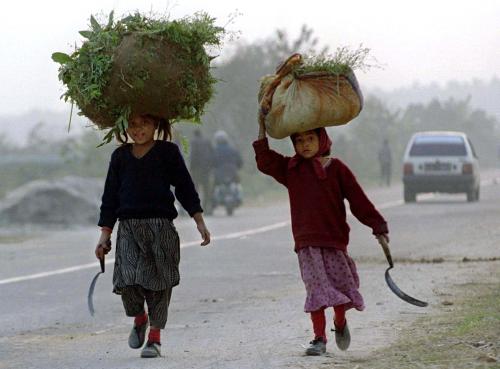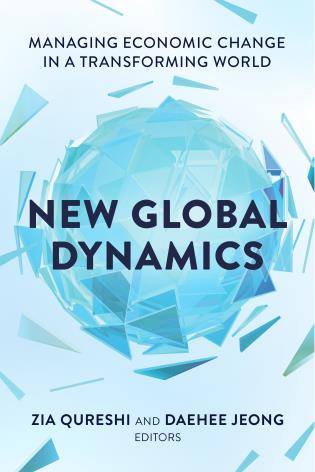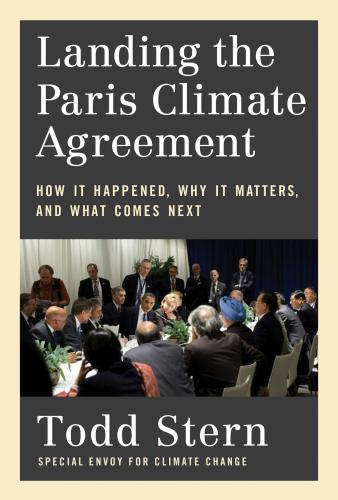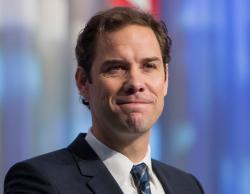This report was originally published by Foreign Affairs.
For more than a decade, the Millennium Development Goals — a set of time-bound targets agreed on by heads of state in 2000 — have unified, galvanized, and expanded efforts to help the world’s poorest people. The overarching vision of cutting the amount of extreme poverty worldwide in half by 2015, anchored in a series of specific goals, has drawn attention and resources to otherwise forgotten issues. The MDGs have mobilized government and business leaders to donate tens of billions of dollars to life-saving tools, such as antiretroviral drugs and modern mosquito nets. The goals have promoted cooperation among public, private, and nongovernmental organizations (NGOs), providing a common language and bringing together disparate actors. In his 2008 address to the UN General Assembly, the philanthropist Bill Gates called the goals “the best idea for focusing the world on fighting global poverty that I have ever seen.”
The goals will expire on December 31, 2015, and the debate over what should come next is now in full swing. This year, a high-level UN panel, co-chaired by British Prime Minister David Cameron, Liberian President Ellen Johnson Sirleaf, and Indonesian President Susilo Bambang Yudhoyono, will put forward its recommendations for a new agenda. The United States and other members of the UN General Assembly will then consider these recommendations, with growing powers, such as Brazil, China, India, and Nigeria, undoubtedly playing a major role in forging any new agreement. But prior to deciding on a new framework, the world community must evaluate exactly what the MDG effort has achieved so far.
WORKING ON A DREAM
The MDGs are not a monolithic policy following a single trajectory. Ultimately, they are nothing more than goals, established by world leaders and subsequently reaffirmed on multiple occasions. The MDGs were not born with a plan, a budget, or a specific mapping out of responsibilities. Many think of the MDGs as the UN’s goals, since the agreements were established at UN summits and UN officials have generally led the follow-up efforts for coordination and reporting. But the reality is much more complicated. No single individual or organization is responsible for achieving the MDGs. Instead, countless public, private, and nonprofit actors-working together and independently, in developed and developing countries — have furthered the goals. Amid this complexity, the achievements toward reaching the MDGs are all the more impressive. The goals have brought the diffuse international development community closer together.
Before the MDGs were crafted, there was no common framework for promoting global development. After the Cold War ended, many rich countries cut their foreign aid budgets and turned their focus inward, on domestic priorities. In the United States, for example, the foreign aid budget hit an all-time low in 1997, at 0.09 percent of gross national income. Meanwhile, throughout the 1990s, institutions such as the World Bank and the International Monetary Fund (IMF) encouraged developed and developing countries to scale back spending on public programs-in the name of government efficiency-as a condition for receiving support.
The results were troubling. Africa suffered a generation of stagnation, with rising poverty and child deaths and drops in life expectancy. Economic crises and the threat of growing inequality plagued Asia and Latin America. The antiglobalization movement gained such force that in November and December 1999, at what has come to be called “the Battle in Seattle,” street protesters forced the World Trade Organization to cancel major meetings midstream.
The suspicions on the part of civil society carried over into policy debates. In the late 1990s, the Organization for Economic Cooperation and Development proposed “international development goal” benchmarks for donor efforts. The OECD’s proposal was later co-signed by leaders of the IMF, the World Bank, and the UN. In response, Konrad Raiser, then head of the World Council of Churches, hardly a fire-breathing radical, wrote UN Secretary-General Kofi Annan to convey astonishment and disappointment that Annan had endorsed a “propaganda exercise for international finance institutions whose policies are widely held to be at the root of many of the most grave social problems facing the poor all over the world.”
That proposal never got off the ground, but the international community made other progress in the lead-up to 2000 that helped set the groundwork for the MDGs. Most notably, G-8 leaders took a major step forward when they crafted a debt-cancellation policy at their 1999 summit in Cologne, Germany. Under this new policy, countries could receive debt relief on the condition that they allocated savings to education or health. This helped reorient governments toward spending in social sectors after many years of cutbacks.
At the 2000 UN Millennium Summit, which was the largest gathering of world leaders to date, heads of state accepted that they needed to work together to assist the world’s poorest people. Looking at the challenges of the new century, all the UN member states agreed on a set of measurable, time-bound targets in the Millennium Declaration. In 2001, these targets were organized into eight MDGs: eradicate extreme poverty and hunger; achieve universal primary education; promote gender equality and empower women; reduce child mortality; improve maternal health; combat HIV/AIDS, malaria, and other diseases; ensure environmental sustainability; and forge global partnerships among different countries and actors to achieve development goals. Each goal was further broken down into more specific targets. For example, the first goal involves cutting in half “between 1990 and 2015, the proportion of people whose income is less than $1 a day.”
In practical terms, the MDGs were actually launched in March 2002, at the UN International Conference on Financing for Development, in Monterrey, Mexico. The attendees, including heads of state, finance ministers, and foreign ministers, agreed that developed countries should step in with support mechanisms and adequate financial aid to help poor countries committed to good governance meet the MDG targets. Crucially, leaders set a benchmark for burden sharing when they urged “developed countries that have not done so to make concrete efforts towards the target of 0.7 percent of gross national income (GNI) as official development assistance to developing countries.” At the time of the conference, the 22 official OECD donor countries allocated an average of 0.22 percent of GNI to aid. Thus, working toward a 0.7 target implied more than tripling total global support. The Monterrey conference established the MDGs as the first global framework anchored in an explicit, mutually agreed-on partnership between developed and developing countries.
THE GLOBAL CONVERSATION
These historic intergovernmental agreements have inspired much debate. Some NGO leaders, including participants in the annual World Social Forum, distrusted any agreement that involved international financial institutions and was negotiated behind closed doors. Human rights activists were dismayed that the MDGs excluded targets for good governance, which they considered a contributor to development and a key outcome unto itself. Some environmental activists were bothered by the narrow formulation of the targets, which ignored major issues, such as climate change, land degradation, ocean management, and air pollution.
To be sure, the MDG framework is imperfect. Several issues, such as gender equality and environmental sustainability, are defined too narrowly. The education goal is limited to the completion of primary school, overlooking concerns about the quality of learning and secondary school enrollment levels. In addition, some academics, such as the economist William Easterly, argue that the remarkable ambition of the goals is unfair to the poorest countries, which have the furthest to go to meet the targets, and minimizes what progress those countries do achieve. Sure enough, if the child survival goal were to cut mortality by half, instead of by two-thirds, 72 developing countries would already have met the target by 2011. Instead, the two-thirds goal has been achieved by only 20 developing countries so far. In addition, the MDGs’ emphasis on human development issues, such as education and health, sometimes downplays the importance of investments in energy and infrastructure that support economic growth and job creation.
Nonetheless, the framework has provided a global rallying point. In 2002, with a mandate from Annan and Mark Malloch Brown, then the administrator of the UN Development Program, the economist Jeffrey Sachs launched the UN Millennium Project, which brought together hundreds of experts from around the world from academia, business, government, and civil-society organizations to construct policy plans for achieving the goals. Sachs also tirelessly lobbied government leaders in both developed and developing countries to expand key programs, especially in health and agriculture, in order to meet the MDG targets.
In the lead-up to the 2005 G-8 summit, in Gleneagles, Scotland, advocacy organizations worldwide championed the MDGs. In developing countries, NGO leaders, such as Amina Mohammed, Kumi Naidoo, and Salil Shetty, encouraged civil-society leaders to hold their governments accountable for meeting the goals. In developed countries, organizations such as ONE, co-founded by the activist Jamie Drummond, the rock star Bono, and others, petitioned politicians and conducted public awareness campaigns to demand that world leaders step up their efforts to meet the targets. At the summit, British Prime Minister Tony Blair and Gordon Brown, then British chancellor of the exchequer, put the MDGs and foreign aid commitments at the top of the agenda. Leaders at Gleneagles committed to increasing global aid by $50 billion by 2010 and set the groundwork for larger commitments to be made by 2015. However, one powerful player on the world stage, the United States, remained hesitant to embrace the MDG agenda.
PLAYERS ON THE BENCH
U.S. President George W. Bush launched the Millennium Challenge initiative in 2002, promising a 50 percent increase in U.S. foreign aid within three years, with money going to countries committed to good governance. The initiative drew inspiration from the MDGs, as the name suggests, but confusingly, it did not directly link to the targets. Ten months later, in his 2003 State of the Union address, Bush launched the President’s Emergency Plan for AIDS Relief, which has dramatically improved access to AIDS treatment in the developing world. This program was in many ways in line with the MDG effort but did not explicitly link to the goals. Bush even endorsed the UN Millennium Declaration and the Monterrey agreements, but he refused to support the MDGs, largely because his administration viewed them as UN-dictated aid quotas.
Holding a similar view, State Department officials regularly claimed that they supported the targets of the Millennium Declaration but not the MDGs, despite the fact that the MDG targets were drawn directly from the Millennium Declaration. U.S.-UN tensions over the Iraq war were a critical backdrop, with the Bush administration reticent to support a major UN initiative. Washington’s aversion was so strong that many U.S. advocacy groups avoided using the term “Millennium Development Goals” for fear of losing influence. When John Bolton became the U.S. ambassador to the UN in August 2005, one of his first actions was to suggest deleting all references to the MDGs in the drafted agreement of the upcoming UN World Summit. The subsequent uproar from other countries and U.S. media outlets forced Washington to modify its position. In his summit speech, Bush finally endorsed the MDGs, using the phrase “Millennium Development Goals” publicly for the first time.
By refusing to directly engage with the MDGs in their early years, the United States missed an opportunity to highlight its contributions to development efforts and foster international goodwill. In the early years of this century, the United States helped revolutionize global health, a central pillar of the MDGs, first through Bush’s AIDS initiative and later through efforts on malaria and other deadly diseases. Furthermore, by resisting a project on which most of the world was actively collaborating, Washington missed easy opportunities to build political capital for solving much thornier and divisive international issues.
Diplomatic tensions have subsided under the Obama administration, which has given much stronger rhetorical support to the MDGs and has continued the previous administration’s basic development policies, in addition to launching a major initiative to reduce poverty by supporting small farms around the world. Nevertheless, many officials in Washington remain either skeptical or disengaged when it comes to the MDGs, most likely because of a long-standing aversion to fixed foreign aid spending, especially when defined by an international agreement. This fear, however, is baseless. The MDGs do not dictate any aid commitments, and the only related figure, the 0.7 aid target, which countries agreed to work toward in Monterrey in 2002, was endorsed by Bush. It was only later that some countries, such as the United Kingdom, made timetables to meet this aid target.
The World Bank has similarly missed out. Although the bank has championed the framework at senior political levels, it has not adequately facilitated MDG efforts on the ground. Early resistance was in part due to bureaucratic resentment of the UN for its having been given such a prominent role on development issues. In addition, as an institution dominated by economists, the bank is prone to prioritize economic reforms over investment in social sectors. Even more, there is widespread distrust among the bank’s staff that donor countries will provide adequate financing for the MDGs. Such concerns are not without merit, as the G-8 ended up falling more than $10 billion short on its Africa pledges for 2010 alone.
Nevertheless, the bank, as a main interlocutor with the developing world, should have helped poor countries assess how they could achieve the MDGs and sounded the alarm about donor financing gaps. Furthermore, the bank has a self-serving reason to get onboard: the MDGs spurred a major budgetary expansion for the International Development Association, the branch of the bank devoted to supporting the poorest countries. Fortunately, the United States and the World Bank are coming around on the MDGs, attracted by the proven success of the framework.
IT’S A SMALL WORLD AFTER ALL
As of late 2010, five years before the deadline, the world had already met the overarching MDG of cutting extreme poverty by half. The estimated share of the developing-world population living on less than $1.25 per day (the technical MDG measurement of extreme poverty) had dropped from 43 percent in 1990 to roughly 21 percent in 2010. This statistic is somewhat skewed by progress that was under way in China and other Asian countries long before the MDGs were adopted. The framework is not solely responsible for all of the advancements of the past 12 years. Many other forces, such as the expansion of global markets and the creation of groundbreaking health and communications technologies, have helped the developing world. Moreover, the goals relating to hunger, sanitation, and the environment have not been met. Poverty reduction, however, has progressed in every region since 2000. Even excluding China from the global calculation, the world’s share of impoverished people fell from 37 percent in 1990 to 25 percent in 2008, and forthcoming data should show an even greater drop.
Most important, the MDGs have kick-started progress where it was lacking, especially in Africa, where unprecedented economic growth and poverty reduction are now taking place. From 1981 to 1999, extreme poverty in sub-Saharan Africa rose from 52 percent of the population to 58 percent. But since the launch of the MDGs, it has declined sharply, to 48 percent in 2008. Much of this was likely driven by MDG-backed investments in healthier and better-educated work forces in the region. The global MDG campaign has also prompted support for small subsistence and cash-crop farms, which has boosted growth in many low-income countries, such as Malawi.
Primary education rates have increased around the world, too, with South Asia and sub-Saharan Africa experiencing particularly big jumps in enrollment. Much of this has been the result of funding from MDG-linked initiatives, such as the Global Partnership for Education, launched in 2002 by the World Bank and other development organizations to help poor countries “address the large gaps they face in meeting education MDG 2 and 3, in areas of policy, capacity, data, finance.” These same efforts have helped nearly every world region achieve gender parity in classrooms.
The greatest MDG successes undoubtedly concern health. The MDGs have invigorated multilateral institutions, such as the GAVI Alliance (formerly called the Global Alliance for Vaccines and Immunization), which seeks to achieve MDGs “by focusing on performance, outcomes and results.” The goals have also inspired a huge increase in private-sector aid. Ray Chambers, a respected philanthropist and co-founder of a New York private equity firm, first learned of the goals in 2005. Since then, working with Sachs and others, Chambers has coordinated a worldwide coalition of policy, business, and NGO leaders in an effort to help the developing world meet the goal for malarial treatment and prevention. Thanks in part to this global effort, malaria-related mortality has dropped by approximately 25 percent since 2000, with most of those gains probably occurring since 2005. Many pharmaceutical companies have also put forth major efforts to make their medicines more widely available in poor countries, and new initiatives are continuing to take shape. The MDG Health Alliance, founded in 2011, is comprised of business and NGO leaders around the world working toward the MDG health targets, including the elimination of mother-to-child HIV transmission.
The combined results of these campaigns are remarkable. For example, in Senegal, child mortality has plummeted by half since 2000. In Cambodia, it has dropped by 60 percent. Rwanda has recorded a ten percent average annual reduction since 2000, one of the fastest declines in history. Even China has seen a significant decrease in child deaths, possibly because the expanded global emphasis on health has encouraged the country’s policymakers to pay more attention to relevant issues. Overall, despite rapid global population growth, there has been a decrease in children dying worldwide before their fifth birthdays, from 11.7 million in 1990 to 9.4 million in 2000 and 6.8 million in 2011.
No issue has been more closely interconnected with the MDGs than the HIV/AIDS treatment campaign. In 2000, nearly 30 million people were infected, the vast majority in Africa, where only approximately 10,000 people were in treatment and over one million people were dying every year from the disease. The next year, the head of the U.S. Agency for International Development publicly deemed large-scale AIDS treatment in Africa impossible. Undeterred, Annan launched the Global Fund to Fight AIDS, Tuberculosis and Malaria, which aims to achieve “long-term outcome and impact results related to the Millennium Development Goals.”
Spurred by the launch of the MDGs, Jim Yong Kim, then head of the World Health Organization’s HIV/AIDS department, introduced the “3 by 5” initiative in 2003, which aimed to have three million people living with AIDS in the developing world receiving treatment by 2005. By the end of 2005, only 1.3 million people were receiving treatment-fewer than half of the target. But thanks to the interwoven AIDS-MDG campaign, the notion of service delivery targets has sunk in globally, helping expand AIDS treatment by orders of magnitude: also in 2005, the G-8 and the UN General Assembly endorsed a target of universal access to treatment by 2010, backed by major financial commitments. The MDG movement has expanded the world’s ambitions in tackling health crises and made extraordinary progress. In 2011, more than eight million people worldwide were receiving AIDS treatment.
NEXT-GENERATION GOALS
The MDGs have proved that with concentration and effort, even the most persistent global problems can be tackled. The post-2015 goals should remain focused on eliminating the multiple dimensions of extreme poverty, but they also need to address emerging global realities. These new challenges include the worsening environmental pressures affecting the livelihoods of hundreds of millions of people, the growing number of middle-income countries with tremendous internal poverty challenges, and rapidly spreading noncommunicable diseases.
The new goals also need to be matched with resources. Without the Monterrey agreements of 2002 and the financial commitments made at the Gleneagles summit in 2005, the MDGs might well have faded from the international agenda. It is crucial that the post-2015 negotiations not be left solely to foreign and development ministries. Finance ministries will need an equal say on many of the most central issues and therefore need to be included from the beginning. Other relevant ministries, such as those that deal with health and environmental issues, should be consulted regularly. Additionally, in preparation for 2015, multilateral organizations, such as the World Bank and UN agencies, should conduct independent external reviews of their contributions to the MDGs and identify benchmarks for post-2015 success based on the results. And the United States needs to join the international community in making a solid commitment to long-term, goal-oriented foreign aid.
The MDGs have helped mobilize and guide development efforts by emphasizing outcomes. They have encouraged world leaders to tackle multiple dimensions of poverty at the same time and have provided a standard that advocates on the ground can hold their governments to. Even in countries where politicians might not directly credit the MDGs, the global effort has informed local perspectives and priorities. The goals have improved the lives of hundreds of millions of people. They have shown how much can be achieved when ambitious and specific targets are matched with rigorous thinking, serious resources, and a collaborative global spirit.
Looking forward, the next generation of goals should maintain the accessible simplicity that has allowed the MDGs to succeed and also facilitate the creation of better accountability mechanisms both within and across governments. In addition, the new goals need to give low- and middle-income countries a greater voice in shaping the agenda. Most important, momentum matters. Just as progress in individual MDG areas has inspired other campaigns, so work done now, in the final stretch, will affect what happens in the future. The results achieved by 2015 will mark an endpoint, but even more, they will provide a springboard for the next generation of goals. There is no time to lose.









Commentary
Own the Goals: What the Millennium Development Goals Have Accomplished
February 21, 2013